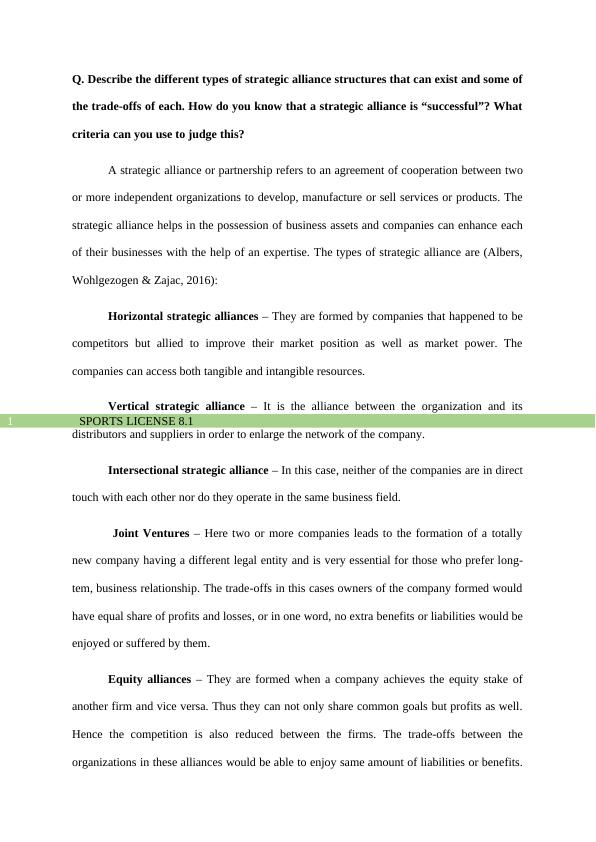Types of Strategic Alliance Structures and Their Trade-offs
You are on the World Triathlon Corporation (WTC) licensing team and have been asked to develop a licensing plan for the Ironman brand. Watch the event to identify potential licensing opportunities, state three licensing business objectives, prioritize the opportunities, and discuss how they align with the objectives.
5 Pages882 Words256 Views
Added on 2022-12-05
About This Document
This document discusses the different types of strategic alliance structures and the trade-offs associated with each. It also explores how to determine the success of a strategic alliance and the criteria that can be used to judge it.
Types of Strategic Alliance Structures and Their Trade-offs
You are on the World Triathlon Corporation (WTC) licensing team and have been asked to develop a licensing plan for the Ironman brand. Watch the event to identify potential licensing opportunities, state three licensing business objectives, prioritize the opportunities, and discuss how they align with the objectives.
Added on 2022-12-05
ShareRelated Documents
End of preview
Want to access all the pages? Upload your documents or become a member.
Challenges and Benefits of International Strategic Alliances
|11
|3719
|164
International Business Management: Cooperative Strategies, Challenges, and MNCs in Emerging Economies
|7
|1525
|229
International Strategic Alliances in Foreign Market Expansion
|13
|3995
|402
Business Law: Funding, Business Structure, Litigation Issues, and Share Transfer
|11
|3348
|40
Types of businesses enterprise
|6
|1178
|259
Engineering and Management: Review of Strategic Alliances and Joint Ventures
|4
|837
|435


